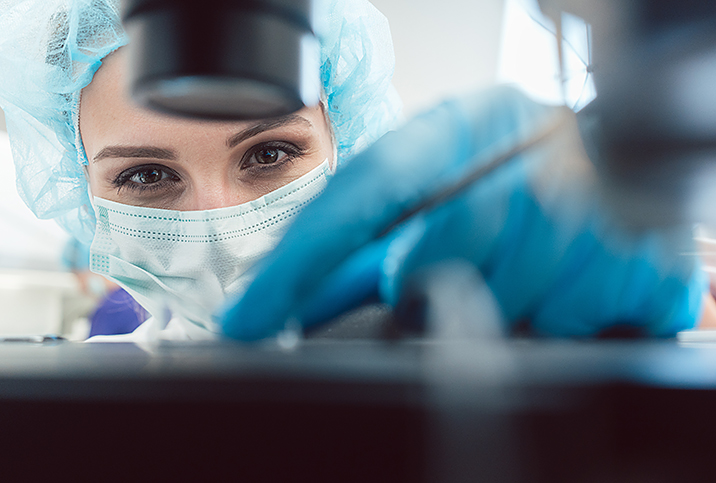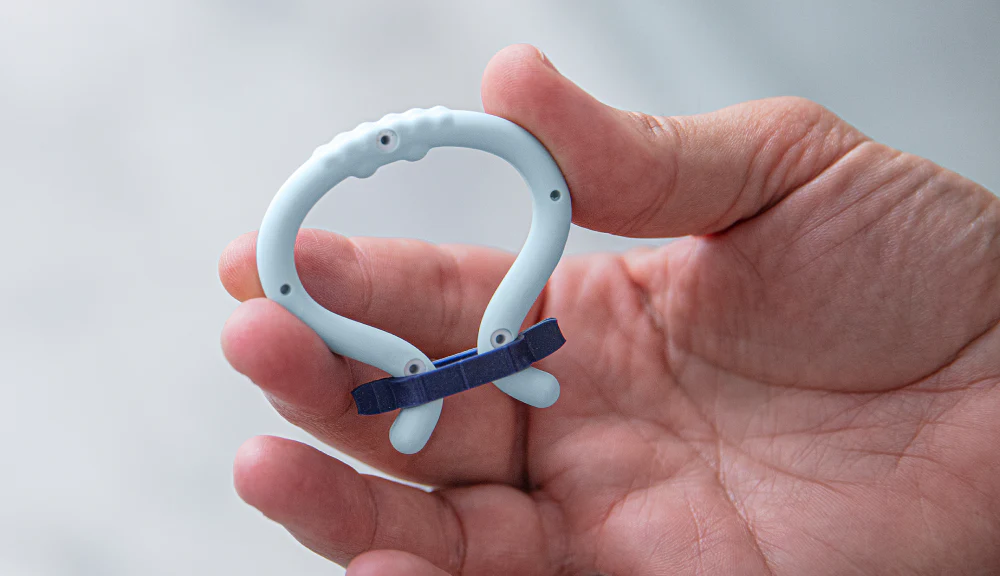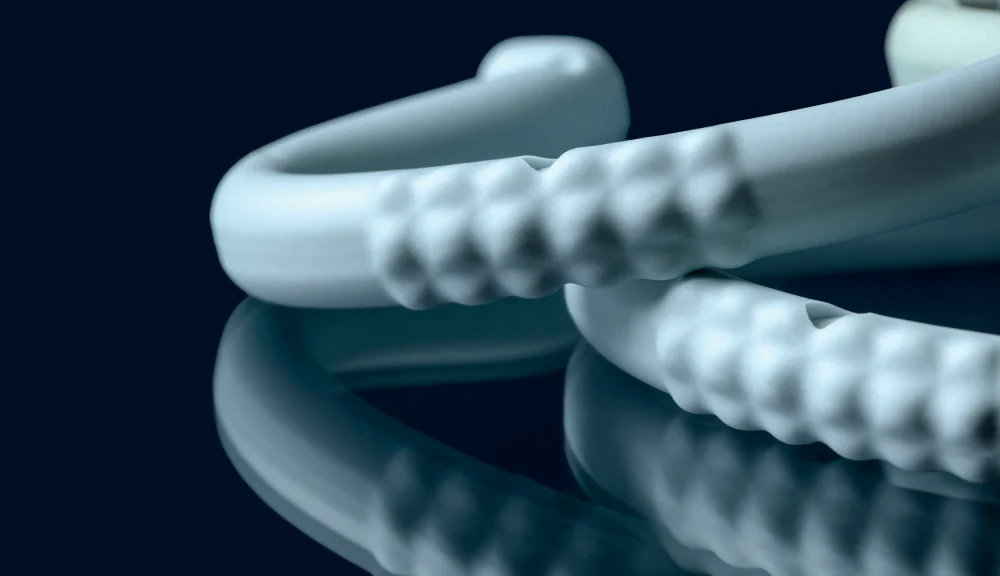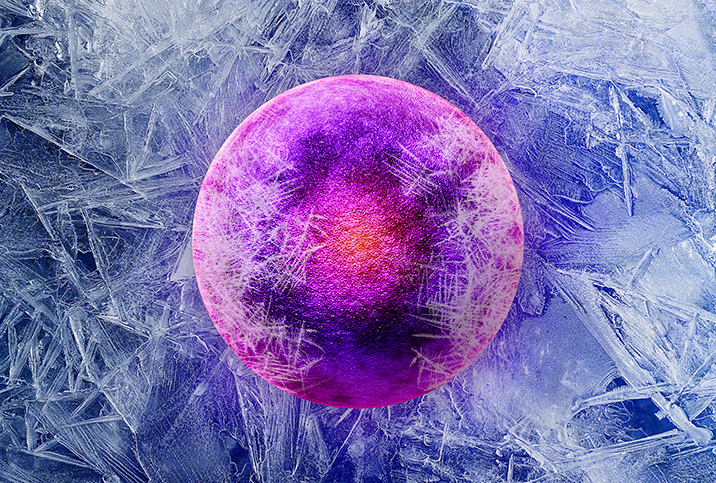INVOcell Bridges Conventional Pregnancy With Traditional IVF

A new innovation in fertility technology is pairing the best of a laboratory setting with the innate strengths of the human body. Using a device named INVOcell, the process of intravaginal culture (IVC) is a hybrid of in vitro fertilization (IVF) and a more conventional pregnancy.
Clinical trials for INVOcell indicate encouraging results, said Jessica Ryniec, M.D., a reproductive endocrinology and infertility specialist at CCRM Fertility Boston. According to Ryniec, a clinical trial of INVOcell involved 450 cycles (421 of which resulted in embryo transfers), and approximately 25 percent resulted in live birth, compared with 10 percent to 15 percent for intrauterine insemination (IUI) and approximately 55 percent (or more) for IVF.
"Other studies with intravaginal culture have demonstrated a higher live birth rate more comparable to IVF success," Ryniec added.
Age is a major factor in the success rate.
"Ultimately, success is still highly dependent on [the] age of the person undergoing the ovarian stimulation and egg retrieval because as we get older, our fertility and success starts to decline," Ryniec said.
The process
The process of IVF using an INVOcell device takes a few steps, some of which resemble the process of IVF. The INVOcell includes an inner chamber, a culture device and a retention device, allowing the woman's body to act as a natural incubator for fertilization, according to its website.
Stimulating the ovaries
Before IVF can begin, your doctor prescribes medication to stimulate ovulation.
"The process starts with the suppression phase with the use of oral contraceptives to prevent premature ovulation," said Inger Britt Carlsson, Ph.D., vice president of global medical affairs for INVO Bioscience, the maker of INVOcell, headquartered in Lakewood Ranch, Florida. "The next step would then be the ovulation stimulation. During this process, doctors prescribe different medications that stimulate the ovaries into producing multiple mature eggs, instead of one egg in a normal menstrual cycle."
While a few injections and a pill regimen doesn't necessarily sound taxing, these counteracting ovarian medications are the true toll of INVOcell, according to Sue Ellen Carpenter, M.D., infertility and reproductive endocrinologist with Bloom Fertility in Atlanta.
"Some people might assume that carrying the INVOcell can be physically demanding. This is not true. The thing that is physically demanding is the stimulation medication for when they stimulate the number of eggs to retrieve," Carpenter explained. Deciding which medication to prescribe "is an independent decision for each clinic or doctor to decide."
Medications used to stimulate ovulation can come with some unpleasant side effects, including:
- Mood swings
- Nausea and vomiting
- Headaches
- Cramping
- Breast tenderness
In rare cases, the medication can also cause ovarian hyperstimulation syndrome (OHSS), which occurs when the ovaries adversely react to the abundance of hormones and become painful and swollen.
Inserting the INVOcell and incubation
To understand the strengths of INVOcell, we have to understand the limitations or difficulties of IVF. Following successful egg harvesting during IVF treatment, a lot of technological resources are necessary to create a womb-like environment for fertilization to occur in the lab setting. A CO2 incubator regulates the humidity, temperature and gas levels of the conditions surrounding the potential fetus.
Even for couples struggling with infertility, most humans with a vagina and a uterus can provide that exact environment for free, safe from any potential—and very expensive— mistakes. That's where the INVOcell comes in.
"Your doctor will then place the culture device inside the retention device and insert them through the vagina into the space below the cervix," Carlsson explained. "The device uses the body as a natural incubator, and the temperature of the vagina allows the culture environment to remain optimal without much variation. That's why it is important to avoid strenuous activity and baths/swimming with the device in place."
The culture device is the outermost shell. It's a smooth, rigid, oblong container designed to prevent contamination of the inner chamber, into which the oocytes (eggs before maturation), sperm or intracytoplasmic sperm injected (ICSI) oocytes are added.
All of this is supported by a diaphragm-like structure called the retention device, a relatively soft device which is lodged in the upper vaginal cavity near the cervix. Carpenter attested that the majority of her patients who have undergone IVC expressed that they barely felt or could not feel the device once it was placed.
The INVOcell isn't inserted into the uterus like an IUD, meaning there's no chance of its presence agitating the uterus and causing painful cramps. The device can sit comfortably inside until it's removed at the end of the incubation period.
From the cervix to the laboratory and back into the womb
After the woman carries the device for less than a week, the INVOcell is removed and examined by a fertility doctor.
"The INVOcell needs to be removed from the vagina to evaluate the embryos and then subsequently do the embryo transfer," Ryniec said.
All potential embryos are evaluated, and the one that appears to be most viable is inserted into the uterus. Any runners-up are frozen for the future. The next step, hopefully, is an uneventful full-term pregnancy.
Pros and cons of IVF with INVOcell
"The proposed benefits of intravaginal culture is lower cost, as a significant portion of the costs of IVF is related to what happens in the embryology lab," Ryniec said. "Other potential benefits include a deeper personal involvement with the fertilization and early embryo growth, and also to allow same-sex female couples to potentially both carry the embryo in separate phases of the process [during culture and then during pregnancy]."
While a large part of the appeal of IVC is that it theoretically costs less than IVF without INVOcell—both procedures cost somewhere in the thousands—the overall cost is dependent on various factors.
While some states mandate coverage for more commonly known, longer-established infertility treatments such as traditional IVF, they may not cover the relatively new INVOcell.
The overall price is also affected by the initial egg suppression and hyperstimulation regimen, which is dependent on the individual health factors of the would-be parent. These factors include age, prior gynecological conditions and procedures, and any number of other fertility variables. However, the exclusion of a CO2 incubator absolutely cuts down on costs.
INVOcell isn't ideal for couples challenged by male infertility. The process favors egg retrieval and direct insemination of sperm into the eggs, but low-quality sperm still may not suffice, Ryniec said.
"IVF is also superior to IVC in creating best-quality embryos for transfer," Ryniec said.
Regardless of the limitations or overall cost—which is speculative until the procedure is complete and a healthy baby is born—these developments within the field of fertility treatments are spectacular. Successful IVF has a 44-year-old history (not counting the use of turkey basters), and the constantly improving options within the field are encouraging for families suffering from infertility.

















